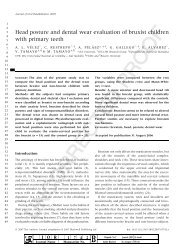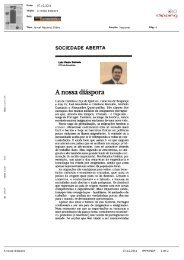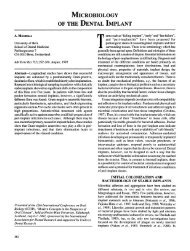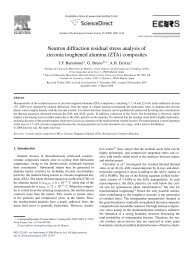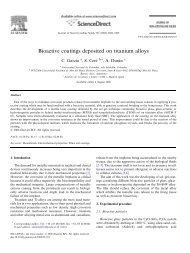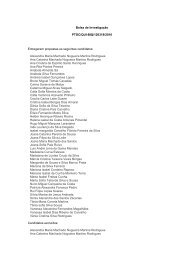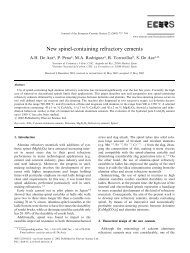Untitled - IBMC - Universidade do Porto
Untitled - IBMC - Universidade do Porto
Untitled - IBMC - Universidade do Porto
Create successful ePaper yourself
Turn your PDF publications into a flip-book with our unique Google optimized e-Paper software.
INVITED Lecture 02<br />
Strategies to uncover the drought tolerance mechanism of the<br />
biodiesel plant Jatropha curcas (purging nut)<br />
Helena Sapeta 1,2 , Tiago Lourenço 1,2 , J. Miguel Costa 2,3 , Stefan Lorenz 4 , Christian Grumaz 5 ,<br />
Kai Sohn 4 and M. Margarida Oliveira 1,2<br />
1 Genomics of Plant Stress lab, ITQB-UNL, Av. República, 2780-157 Oeiras, Portugal; 2 IBET, Quinta <strong>do</strong><br />
Marquês, 2784-505, Oeiras, Portugal; 3 Plant Molecular Ecophysiology lab, ITQB-UNL, Av. República,<br />
2780-157 Oeiras, Portugal; 4 Functional Genomics Lab, Fraunhofer IGB, Nobelstr. 12, 70569, Stuttgart,<br />
Germany; 5 University of Stuttgart IGVT, Noberstr. 12, 70569, Stuttgart, Germany<br />
Jatropha curcas is an emerging source of biodiesel due to the high quality oil content of its<br />
seeds. Historically, these plants have been spread around the world by the Portuguese<br />
during the discoveries period. Jatropha curcas plants are very resilient to low water<br />
availability and are amenable for cultivation in areas with poor soil quality. Because the<br />
molecular mechanisms of drought stress response of J. curcas are still poorly described, we<br />
started our studies by comparing the behaviour of two accessions adapted to two<br />
contrasting climates (semi-arid and wet tropical). Seedlings of these plants were submitted<br />
to drought stress by water withhold in laboratory conditions (49 days), followed by<br />
recovery (1 week), and were evaluated for several morphological and physiological<br />
parameters [1] . In parallel, samples were collected for RNA isolation and 22 cDNA libraries<br />
were constructed and sequenced using Next Generation Sequencing (NGS) technology.<br />
Sequences were annotated to the publicly available Jatropha genome database<br />
(http://www.kazusa.or.jp/jatropha/) and expression values were normalized using the<br />
reads/Kb/Million (RPKM) method. Seedlings of both accessions behaved similarly at<br />
morpho-physiological level, both under stress and control conditions. However, differences<br />
were clear when comparing control conditions versus drought in maximum stress.<br />
Hierarchical clustering analysis of the transcriptomic data allowed forming 3 major clades,<br />
encompassing leaf samples, root samples and a third group joining root and leaf samples<br />
under maximum stress (day 49). For day 49 we found approximately 2000 genes in roots<br />
and 2000 in leaves that are responsive to drought. These genes have been described as<br />
involved in known pathways of stress response. We have been conducting RT-qPCR for<br />
specific genes, and further confirming the RNAseq data. Moreover, we found a very high<br />
drought stress recovery capacity, with the plants showing full recovery after only 3 days of<br />
re-watering, in terms of growth, physiology and transcriptomic data. We also found<br />
interesting changes at the photosynthetic metabolism, with decrease in the chlorophyll a/b<br />
ratio under severe stress, supported by the transcriptomic and RT-qPCR data. At present,<br />
we are further characterizing the drought responsive system of J. curcas by analysing<br />
changes at the hormonal level. The most recent data will be presented.<br />
Acknowledgments: Quinvita for providing the seeds and Funding by FCT (PTDC/AGR-GPL/<br />
101435/2008).<br />
[1] Sapeta H, Costa JM, Lourenço T, Maroco J, van der Linde P, Oliveira MM. (2013) - Environm. Exp. Bot.<br />
85: 76-84.<br />
14


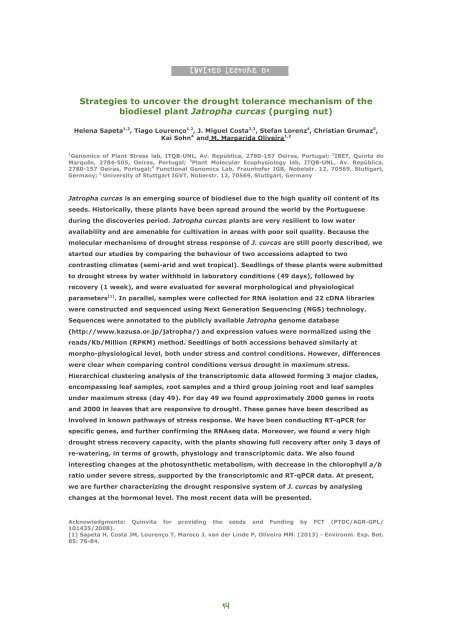

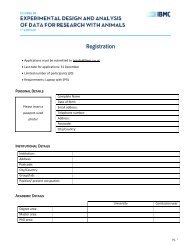

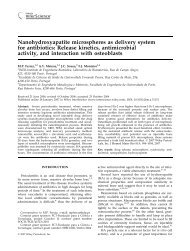
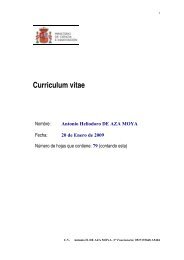
![registration form - download [pdf] - IBMC](https://img.yumpu.com/22442689/1/184x260/registration-form-download-pdf-ibmc.jpg?quality=85)
